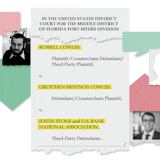Jim Miller's mail-order medicine typically takes five days to arrive at his home in north Minneapolis. This month, it took two weeks.
Miller, a Vietnam veteran who worked 35 years for the U.S. Postal Service, asked why. The postal workers he spoke to said they had been told to curtail delivery of first-class mail.
The Postal Service denies the charge, saying it is trying to handle mail in a more cost-effective way that reduces overtime and keeps the service financially sustainable.
Still, examples of slow mail delivery now abound in the Twin Cities, adding to a raging national debate about recently appointed Postmaster General Louis DeJoy, a major donor and fundraiser for President Donald Trump. Last week, Trump made clear he opposes additional money for the Postal Service to handle an expected surge of mail-in ballots, which he has said could cost him re-election.
As the battle over mail-in voting intensifies ahead of the November election, some customers feel as if they have become collateral damage.
Angie Sandifer, who designs hats in her St. Paul art studio, has noticed the extended lengths of time it took to deliver face masks she makes for people to wear during the pandemic. One shipment to Boston took three weeks. But it really hit home when she could not get needed supplies and almost missed a hat delivery deadline.
"I ordered the supplies on Friday," she said. "I paid extra for priority two-day delivery. The package shipped on Monday. I tracked the package online. It sat for four days in a mail facility in St. Paul. It was really frustrating. I could see it was in St. Paul but couldn't do anything about it."
DeJoy issued a memo recently that directed mail carriers to leave mail behind if it was not sorted by regularly scheduled departure times. The document, titled "New PMG's [Postmaster General's] expectations and plan," reads in part, "If the plants run late, they will keep the mail for the next day."


